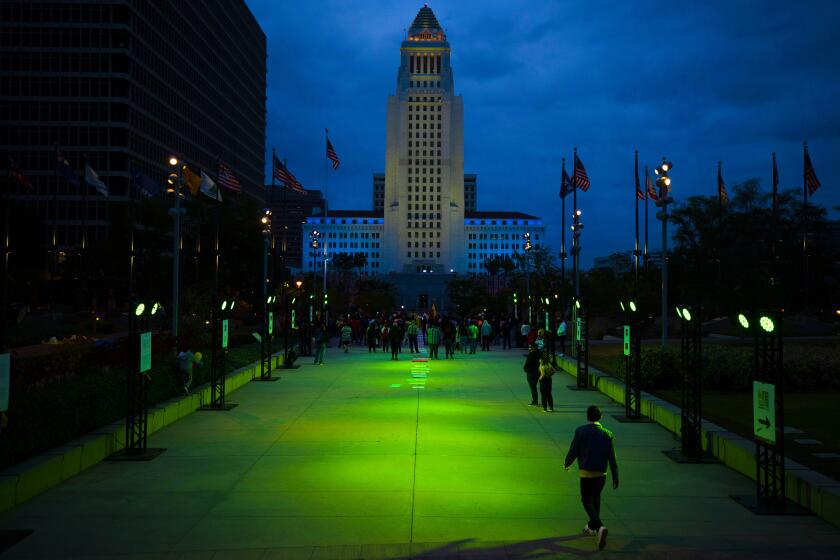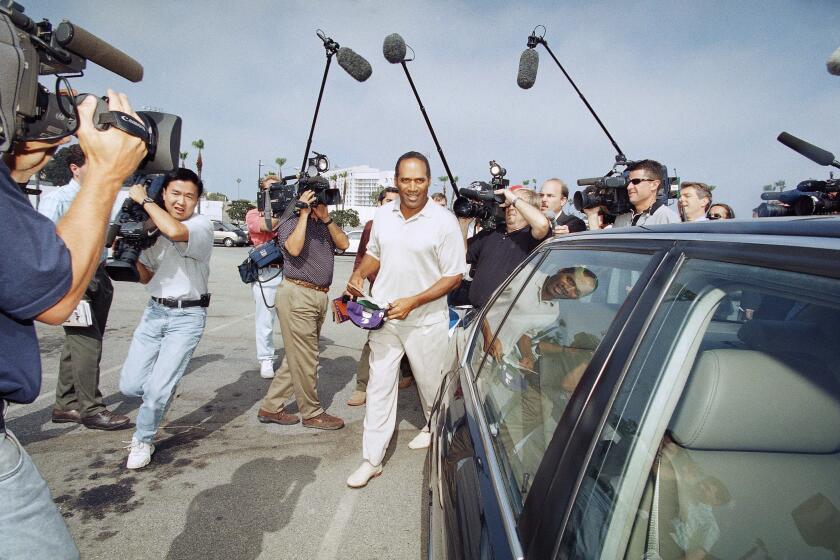Editorial: Setting the course for driverless cars
President Obama gave the green light to autonomous vehicles this week, declaring that the federal government, not the states, should oversee the development of self-driving cars, trucks and buses. The president and Transportation Secretary Anthony Foxx said that these next-generation vehicles are too valuable for public safely and technological innovation to slow down with state-by-state regulations, or lengthy rule-making processes. And besides, self-driving technology is already on the road.
Witness Tesla’s semi-autonomous system, Autopilot, which the carmaker made available for its electric-powered sedans last year (and which has been involved in one confirmed fatal collision). The software and sensors allow the vehicle to steer itself, change lanes, adjust speed and even find a parking space and parallel park. More recently, Uber rolled out a fleet of autonomous vehicles in Pittsburgh, albeit with Uber drivers and technicians riding up front. And major automakers say they will introduce fully autonomous models in the next couple of years.
The Obama administration’s automated vehicles policy attempts to impose some safety standards on a technology that is rapidly evolving and largely unregulated. Until now, there has been no federal guidance on the use of this sort of technology — whether partially autonomous, like Tesla’s autopilot function, or fully self-driving, like Google’s steering-wheel-less prototype. Nor have there been standardized tests for cars to pass before they could hit the road. Car manufacturers have been allowed to decide when to roll out autonomous features, restrained only by the fear of liability if they failed. (That’s par for the course in the auto industry, where new features tend to be regulated only after they’ve been introduced.)
In the absence of federal guidelines, states had started developing a confusing patchwork of rules for driverless cars. Some states and cities have taken a completely hands-off approach, essentially allowing public roads to become uncontrolled laboratories for vehicle safety experiments. Others have looked at tighter controls. California, for example, proposed regulations that would require every autonomous vehicle to come equipped with a steering wheel and brake pedal, and be operated with a licensed driver ready to seize the controls at any moment. But some critics argue that humans are unreliable backups, so the state’s proposal would let carmakers introduce autonomous vehicles that weren’t safe enough, while delaying those that really did not need an attentive human in the driver’s seat. The state is now revising its proposed rules in light of the new federal policy.
The guidance from the Department of Transportation, which was developed in less than a year (warp speed for a government agency), is meant to reduce the risks posed by autonomous vehicles before they hit the market, while also preventing states from creating a mishmash of regulations, at least where automobile safety and performance standards are concerned. That is much-needed federal intervention because autonomous vehicles should be able to cross state borders without having to meet different safety rules. The new federal guidelines say the states can still license human drivers and register vehicles — autonomous or otherwise. And states would still enact and enforce traffic laws. But the federal government would oversee the development, testing and safety of the vehicles themselves.
To that end, the DOT created a 15-point safety checklist that asks manufacturers to document everything from how the driverless vehicle performs and abides by traffic laws, to what it would do after a crash, and how the manufacturer trains passengers to use the car. These are guidelines, not mandates, and thus voluntary, as Obama noted in a op-ed in the Pittsburg Post–Gazette.
That’s the right approach, given the furious pace of driverless-car development. A formal rule-making could have taken several years, by which time several models of driverless cars could already have hit the market. (Look at California, where the Department of Motor Vehicles has been working on autonomous vehicle regulations since 2012 and a draft released last year is now being reworked.)
Consumer advocates worry that the DOT’s voluntary approach will be less effective in preventing unsafe products than formal rules. Yet it’s hard to imagine a manufacturer would risk its reputation, not to mention the potential for huge liability awards, by ignoring the federal government’s guidelines.
Granted, the administration’s effort leaves some important questions unanswered. Will federal regulators be aggressive in recalling cars or demanding fixes to the problems that arise as autonomous vehicles mix with those driven by humans? Will states and cities be willing to loosen their regulatory grip on self-driving cars and avoid the temptation to adopt overly restrictive policies? The Chicago City Council, for example, is considering banning autonomous cars for fear of safety risks. And are the public and the economy ready for a transportation overhaul?
Autonomous vehicles will ultimately make it safer and easier to move around people and goods, and that will be a tremendous benefit. The biggest challenge is preparing for this dramatic shift; the administration’s guidelines offer a welcome framework for how Washington, the states and local governments should proceed.
Follow the Opinion section on Twitter @latimesopinion and Facebook
More to Read
A cure for the common opinion
Get thought-provoking perspectives with our weekly newsletter.
You may occasionally receive promotional content from the Los Angeles Times.






